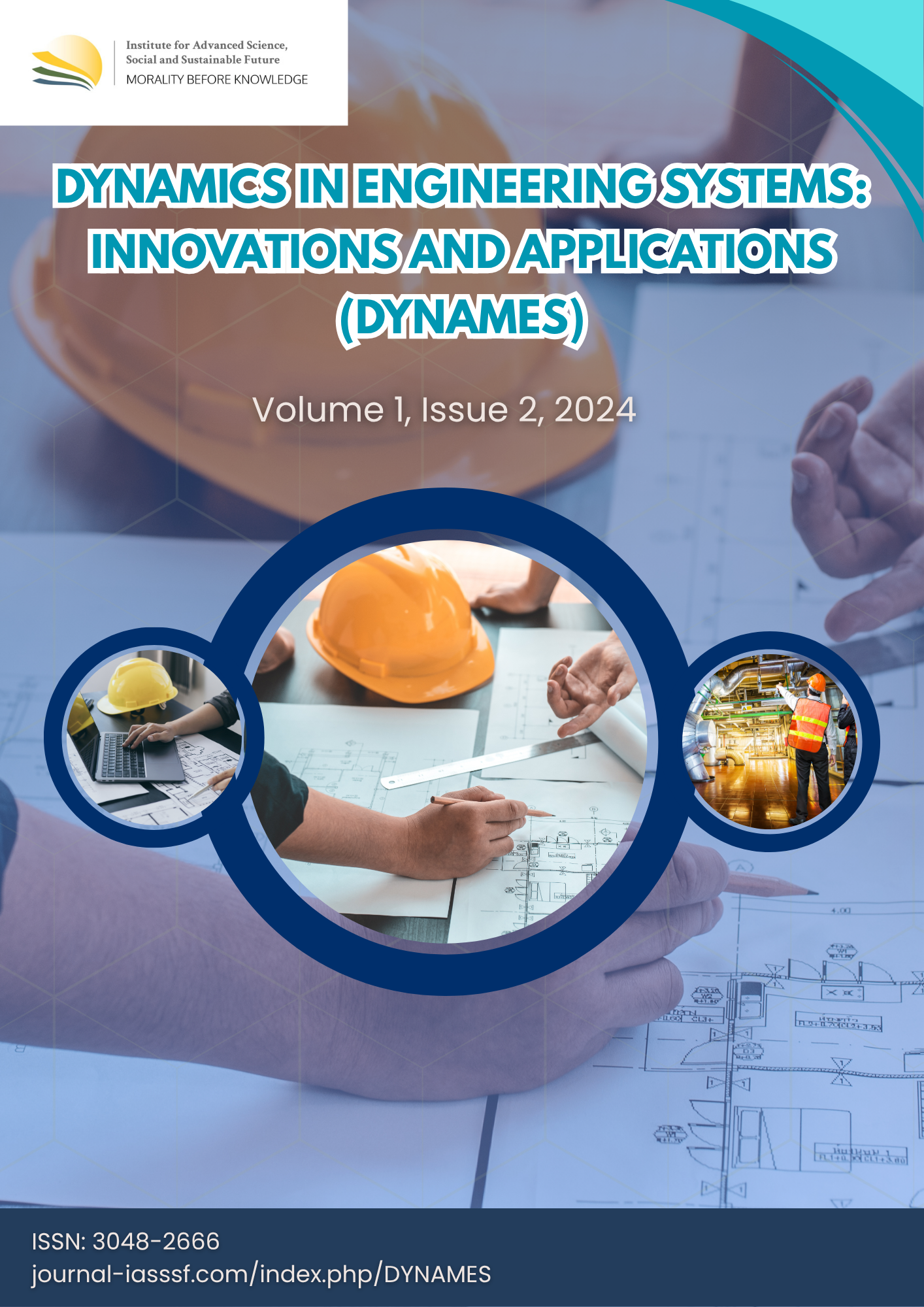Biomass energy from agricultural waste: A green solution to achieve energy security and national economic development
DOI:
https://doi.org/10.61511/dynames.v1i2.998Keywords:
agricultural waste, biomass, energy security, renewable energyAbstract
Background: Biomass energy is considered a sustainable solution with significant potential to enhance energy security and the national economy of Indonesia. Indonesia has vast potential for developing biomass energy from sources such as agricultural waste and wood. Biomass energy serves various purposes and can be used in electricity generation, household heating, industrial applications, and transportation. Methods: This article utilizes literature review to discuss the current status of biomass energy in Indonesia and the policies regulating its utilization for optimal benefits. Finding: Several policy recommendations based on the pentahelix scheme are proposed. The government should establish regulations and provide incentives for biomass energy from agricultural waste, as well as promote infrastructure investments. Private corporations should engage in technology development and partnerships with farmers. The community should be educated about the importance of agricultural waste management and encouraged to participate in biomass energy programs. Media should disseminate information and cover biomass energy projects. Academics should research new technologies and conduct training to enhance farmers' capacities. Conclusion: Therefore, biomass energy can be developed as a solution to achieve energy security and national economic development. Novelty/Originality of This Study: This study offers a novel integrative approach by applying the pentahelix model to formulate comprehensive policy recommendations for optimizing biomass energy utilization in Indonesia.
References
Arsyad, A., Yana, S., Radhiana, R., Ulfia, U., Fitriliana, F., & Juwita, J. (2023). Kendala Teknologi, Pendanaan dan Ketersediaan Bahan Baku Biomassa dalam Pengembangan Energi Terbarukan. Jurnal Serambi Engineering, VIII(1), 4940–4946. https://doi.org/10.32672/jse.v8i1.5666
Bildirici, M. & Özaksoy, F. (2018). An analysis of biomass consumption and economic growth in transition countries. Economic Research-Ekonomska Istrazivanja , 31(1), 386–405. https://doi.org/10.1080/1331677X.2018.1427610
Dani, S. & Wibawa, A. (2018). Challenges and policy for biomass energy in Indonesia. International Journal of Business, Economics and Law, 15(5), 41–47. https://www.ijbel.com/wp-content/uploads/2018/04/IJBEL15_212.pdf
FAO. (2004). Unified Bioenergy Terminology (Issue December). https://openknowledge.fao.org/server/api/core/bitstreams/6d664e5f-81f4-4b5c-a5f9-28f6cdd7bf09/content
Febijanto, I. (2007). Potensi Biomassa Indonesia Sebagai Bahan Bakar Pengganti Energi Fosil. Jurnal Sains Dan Teknologi Indonesia, 9(2), 65–75. https://media.neliti.com/media/publications/131827-ID-potensi-biomasa-indonesia-sebagai-bahan.pdf
Hardoyo. (2013). The Potential of Agriculture and Forestry Biomass Wastes as Sourcce of Bioenergy. 2nd International Conference on Engineering and Technology Development (ICETD 2013), Icetd. http://artikel.ubl.ac.id/index.php/icetd/article/view/125
IRENA. (2022). Indonesia Energy transition Outlook. In Essential Concepts of Global Environmental Governance.
Kasmaniar, Yana, S., Nelly, Fitriliana, Susanti, Hanum, F., & Rahmatullah, A. (2023). Pengembangan Energi Terbarukan Biomassa dari Sumber Pertanian, Perkebunan dan Hasil Hutan: Kajian Pengembangan dan Kendalanya. Jurnal Serambi Engineering, VIII(1), 4957–4964. https://doi.org/10.32672/jse.v8i1.5668
Kibria, M. G., Paul, U. K., Hasan, A., Mohtasim, M. S., Das, B. K., & Mourshed, M. (2024). Current prospects and challenges for biomass energy conversion in Bangladesh: Attaining sustainable development goals. Biomass and Bioenergy, 183(January), 107139. https://doi.org/10.1016/j.biombioe.2024.107139
Králík, T., Knápek, J., Vávrová, K., Outrata, D., Romportl, D., Horák, M., & Jandera, J. (2023). Ecosystem services and economic competitiveness of perennial energy crops in the modelling of biomass potential – A case study of the Czech Republic. Renewable and Sustainable Energy Reviews, 173(December 2022). https://doi.org/10.1016/j.rser.2022.113120
Ministry of Energy and Mineral Resources. (2023). Handbook of Energy and Economic Statistics of Indonesia. Ministry of Energy and Mineral Resource Republic Indonesia.
Nguea, S.M. & Fotio, H.K. (2024). Synthesizing the role of biomass energy consumption and human development in achieving environmental sustainability. Energy, 293(January). https://doi.org/10.1016/j.energy.2024.130500
Nguyen, H. H., Van Nguyen, P., & Ngo, V. M. (2024). Energy security and the shift to renewable resources: The case of Russia-Ukraine war. Extractive Industries and Society, 17(May 2023), 101442. https://doi.org/10.1016/j.exis.2024.101442
Pambudi, N. A., Firdaus, R. A., Rizkiana, R., Ulfa, D. K., Salsabila, M. S., Suharno, & Sukatiman. (2023). Renewable Energy in Indonesia: Current Status, Potential, and Future Development. Sustainability (Switzerland), 15(3). https://doi.org/10.3390/su15032342
Parinduri, L. & Parinduri, T. (2020). Konversi Biomassa Sebagai Sumber Energi Terbarukan. Journal of Electrical Technology, 5(2), 88–92. https://jurnal.uisu.ac.id/index.php/jet/article/view/2885
Pelkmans, L. (2021). IEA Bioenergy Countries’ Report – Update 2021. In IEA Bioenergy (Issue November).
REN21. (2021). Renewables 2019 Global Status Report. Global Overview. https://doi.org/10.1038/522S2a
Sarkodie, S. A., Strezov, V., Weldekidan, H., Asamoah, E. F., Owusu, P. A., & Doyi, I. N. Y. (2019). Environmental sustainability assessment using dynamic Autoregressive-Distributed Lag simulations—Nexus between greenhouse gas emissions, biomass energy, food and economic growth. Science of the Total Environment, 668, 318–332. https://doi.org/10.1016/j.scitotenv.2019.02.432
Shabrina, H. N. (2022). Realities of Agricultural Waste Management in Indonesia ’ s Rural Areas : Regulations , Village-level Practices , and Local Capacities. https://repository.dl.itc.u-tokyo.ac.jp/record/2008202/files/K-09136-a.pdf
Solarin, S. A. & Bello, M. O. (2019). Interfuel substitution, biomass consumption, economic growth, and sustainable development: Evidence from Brazil. Journal of Cleaner Production, 211, 1357–1366. https://doi.org/10.1016/j.jclepro.2018.11.268
Sulasminingsih, S., Hafiz, F., Sari, K., & Yuninda, S. (2023). Penggunaan Biomassa sebagai Energi Alternatif Pembangkit Listrik di Wilayah Pedesaan. Journal of Optimization System and Ergonomy Implementation, 1(1), 42–51. https://doi.org/10.54378/joseon.v1i1.6766
Surono, U. B., Subeni, Sanjaya, P. S., Pratama, B. R., & Alfarisaputra, J. (2023). The Renewable Energy Potential of Food Crop Wastes in Indonesia. International Journal of Renewable Energy Research, 13(2), 707–717. https://doi.org/10.20508/ijrer.v13i2.13617.g8745
US Energy Information Adminsitration. (2021). Country analysis executive summary: Indonesia. In US Energy Information Adminsitration (EIA) (Issue January).
Downloads
Published
How to Cite
Issue
Section
Citation Check
License
Copyright (c) 2024 Assyifa Fauzia

This work is licensed under a Creative Commons Attribution 4.0 International License.














